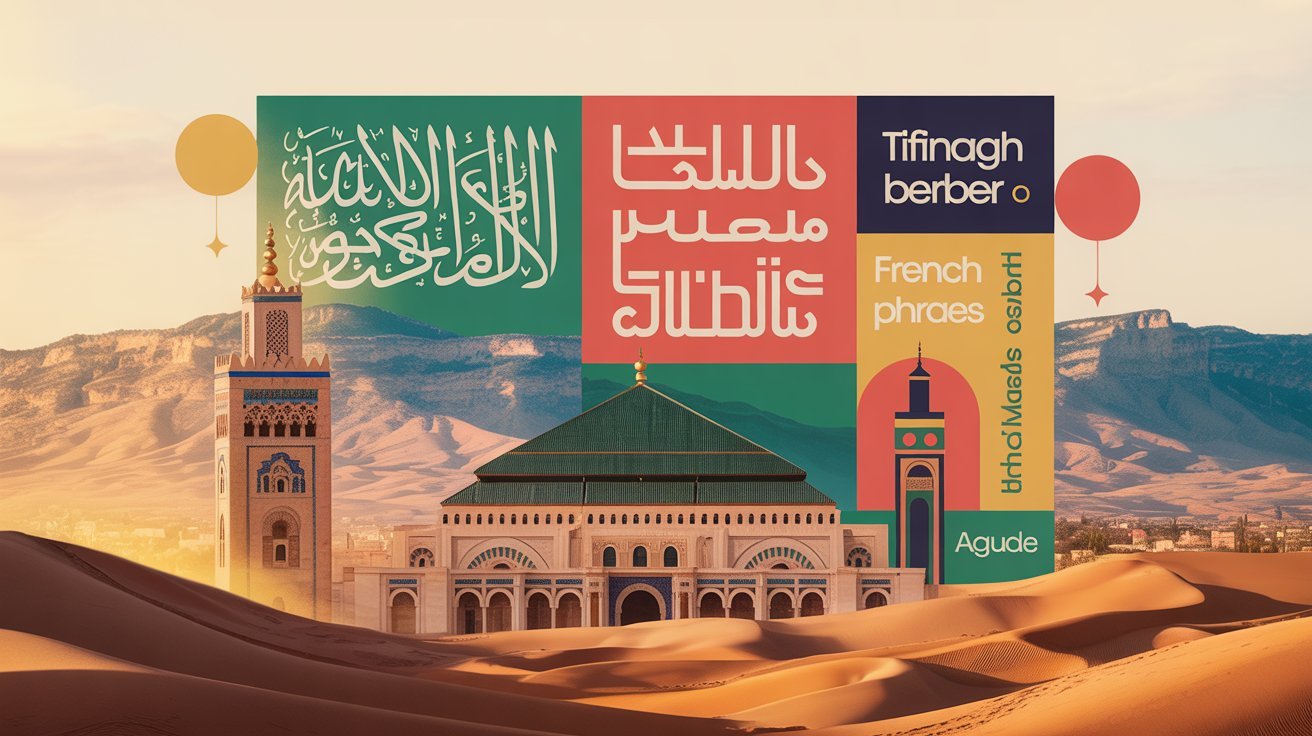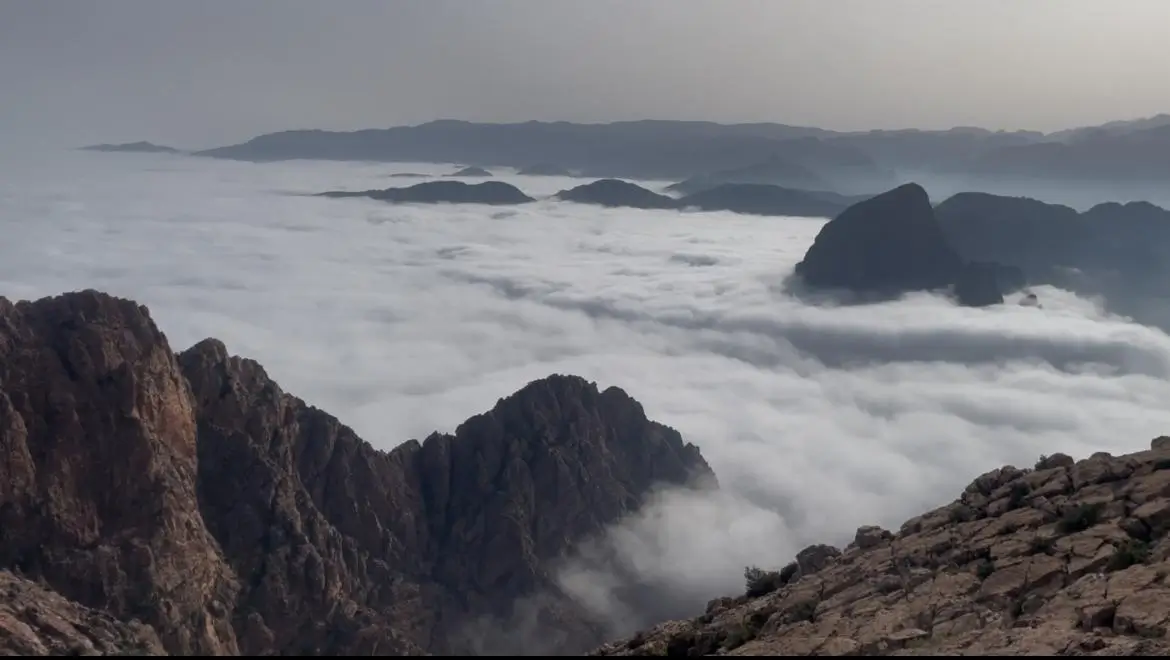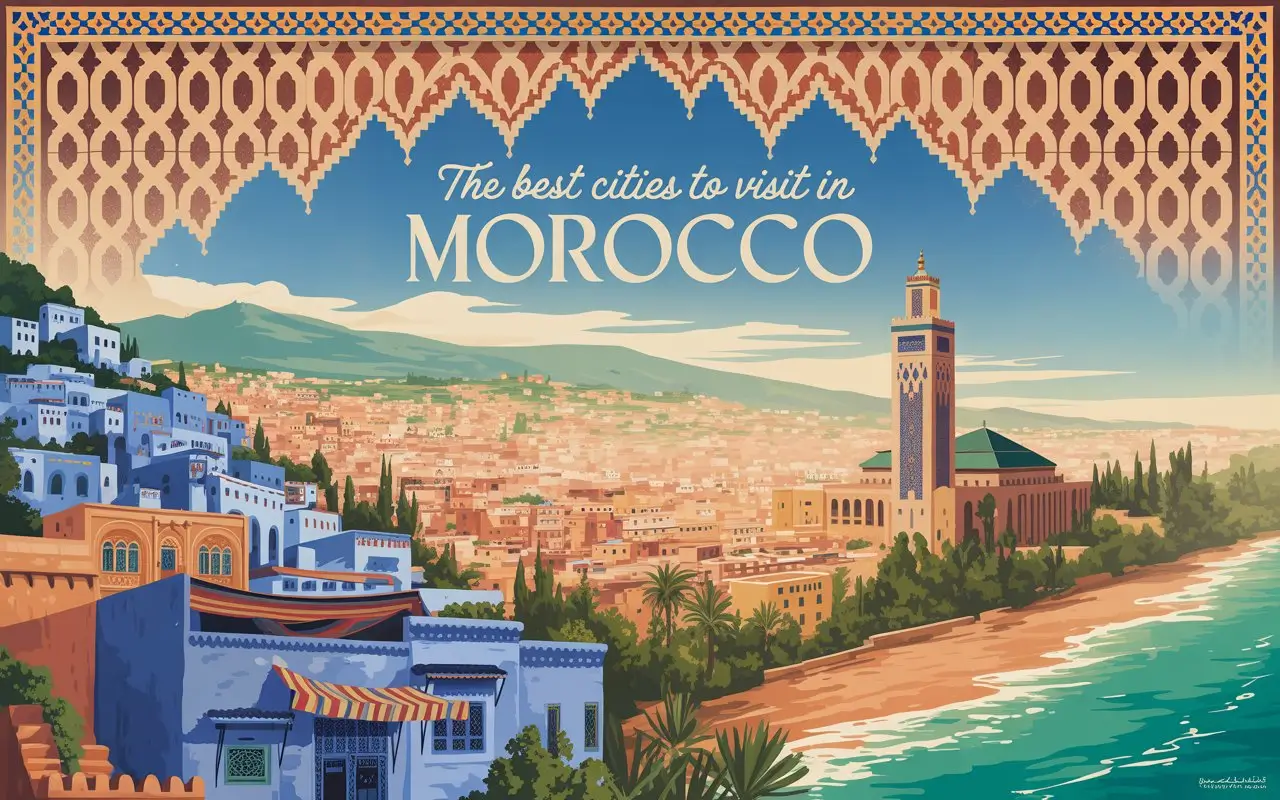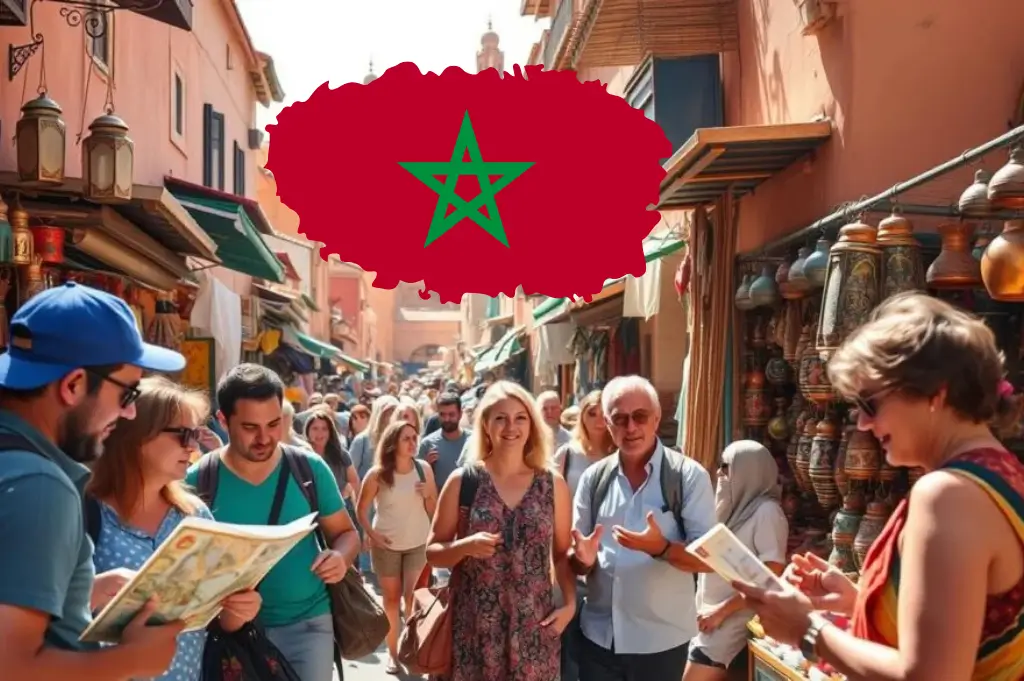The Dragonnier Ajgal: A Hidden Botanical Treasure of Morocco’s Anti-Atlas
Morocco, a country of remarkable biodiversity with a high rate of endemism (25% for vascular plants), harbors species unique to the world, such as the Argan tree and the Atlas Cedar. Among them, one subspecies stands out for its mystery and rarity: the Dragonnier Ajgal.
This majestic plant, long unknown to science, was discovered only in 1996. Its Berber name, “Ajgal,” meaning “the inaccessible” or “that which is perched,” testifies to its singular habitat on the steep cliffs of the Anti-Atlas. This endemic tree Morocco fascinates as much by its beauty as by its exceptional rarity.
This article will immerse you in the world of the Dragonnier Ajgal, from its botany to its legends, from its ancestral uses to its conservation challenges, and will guide you for an unforgettable encounter in its natural environment near Tiznit.
1. What is the Dragonnier Ajgal? A Unique Botanical Identity
1.1. Scientific Identification and Classification
The Dragonnier Ajgal bears the complete scientific name Dracaena draco L. subsp. Ajgal. This arborescent monocotyledonous plant belongs to the Liliaceae family according to classical classification, or to the Asparagaceae family (formerly Dracaenaceae) according to modern phylogenetic classification.
What makes this species particularly remarkable is that it is a subspecies specific and unique to Morocco, existing nowhere else in the world. Although similar to the Canary Islands variety (Dracaena draco), the dragon tree Morocco presents slight differences in form and color that distinguish it from its island cousins.
1.2. Remarkable Physical Characteristics
The Dragonnier Ajgal can reach an impressive height of 6 to 10 meters, sometimes exceeding 10 meters. The oldest specimens of the Dracaena draco species can even surpass 20 meters. Its characteristic trunk divides into three main branches, bearing numerous rosette-arranged leaves at their extremities, creating a unique and recognizable silhouette.
The species is particularly renowned for its exceptional longevity. Specimens like the famous dragon tree of Tenerife have been estimated to be several hundred years old. Determining its age remains a challenge for botanists because, unlike traditional trees, it doesn’t produce wood with annual rings.
The Dragonnier Ajgal’s flowering begins only after 8 to 11 years of age. Its flowers are greenish-white and transform into small round fruits resembling dates. The appearance of the first flowers marks the beginning of the characteristic branching of the crown in older trees, giving the tree its distinctive form.
2. History and Habitat: The Moroccan Rediscovery
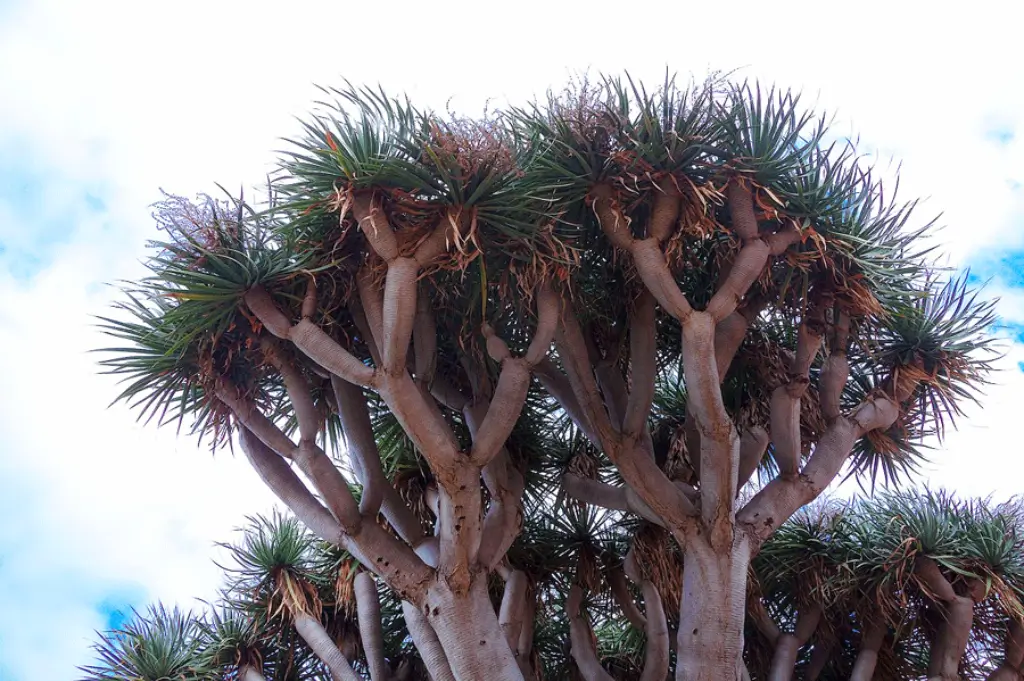
2.1. A Recent and Fortuitous Discovery
The Dragonnier Ajgal was first discovered in Morocco in 1996 by F. Cuzin and A. Benabid, marking an important date in the history of Moroccan botany. This relatively recent discovery explains why this species was until then unknown to the general public and even to the scientific community.
The precise location of this historic discovery is situated in the western part of the Moroccan Anti-Atlas, notably on the cliffs of Jbel Imzi and Jbel Adad Medni, near Anezi, approximately 100 km from Tiznit, or near Agadir, at altitudes reaching up to 1,500 meters. These vertiginous heights explain the Berber name “Ajgal” meaning “the inaccessible.”
2.2. The Natural Range of the Dragonnier Ajgal
The ecosystem that harbors the Dragonnier Ajgal is a pre-steppe to pre-forest environment, unique in the world for its richness in endemic plant species. This Anti-Atlas region constitutes a true natural laboratory of biodiversity.
Morocco, through its strategic geographical position between Europe, Africa, and the Atlantic, constitutes an exceptional biodiversity hotspot with a significant number of endemic species. The Dragonnier Ajgal is part of these “tropical relics” that testify to the ancient geological and climatic history of the region.
3. The “Dragon’s Blood”: Myths, Legends, and Millenary Virtues
3.1. Mythological Origins and the Evocative Name
The name “Dracaena draco” itself perpetuates the myth and fascination that this extraordinary plant exerts. According to an ancient Greek legend, the dragon tree would have been born from the blood of Ladon, a hundred-headed dragon slain by Hercules during his quest for the golden apples of the Garden of the Hesperides.
The evocative nickname “dragon’s blood” comes from its sap, a resin that oxidizes and dries in the open air, taking on a characteristic blood-red tint. This unexpected “animal” color for a plant has fascinated alchemists since antiquity and continues to intrigue visitors who discover the Dragonnier Ajgal.
3.2. Multiple Uses of the Resin
The dragon tree resin was considered a true panacea by the Guanches, the first inhabitants of the Canary Islands. This precious substance was prized and sold at high prices in antiquity for its remarkable medicinal properties. It was particularly used for its hemostatic functions (stopping bleeding) and healing properties. In the 19th century, it even had the reputation of maintaining healthy teeth and gums.
Beyond its medicinal uses, the resin also served for embalming the dead in certain civilizations. It was also used as a coloring material for making dyes, varnishes, and especially for animal cave paintings found on the rock walls of the Anti-Atlas region.
More recently, scientific studies have established that dragon trees possess remarkable filtration properties, effectively eliminating toxic substances like toluene, benzene, xylene, carbon monoxide, and trichloroethylene from ambient air.
3.3. Local Uses of the Trunks
The watertight trunks of the dragon tree Morocco have long served as natural beehives in Morocco, hence one of the interpretations of the name “Ajgal” (“beehive” in Tachelhite). This traditional use testifies to the ingenuity of local populations who knew how to take advantage of the natural properties of this exceptional tree.
4. Conservation of the Dragonnier Ajgal: A Global Challenge

4.1. A Threatened and Precious Species
Considered a “curiosity and marvel of botany at the global level,” the Dragonnier Ajgal is a rare species that unfortunately faces destructive human actions. Overgrazing, in particular, seriously threatens its survival in its natural Anti-Atlas habitat.
Although the Dracaena draco species nearly disappeared in some of its original ranges like the Canaries, the Moroccan subspecies requires particular and urgent attention from authorities and the international community.
4.2. International Recognition and Protection
The site harboring the Dragonnier Ajgal has been a candidate for UNESCO World Heritage inscription under the designation “Dragonnier Ajgal Area” since October 12, 1998. This candidacy was submitted by Morocco’s Direction of Cultural Heritage.
The dossier meets several UNESCO natural criteria (vii, viii, ix, x), recognizing its exceptional universal value as an endemic tree Morocco and unique ecosystem. This international recognition underlines the global importance of conserving this remarkable species.
4.3. Local Conservation Initiatives
Aware of the rarity and inestimable value of the Dragonnier Ajgal, local community actors have founded the Ajgal Association for its protection. This community initiative testifies to the inhabitants’ attachment to their exceptional natural heritage.
Despite these commendable efforts and growing mobilization, much remains to be done to preserve this emblematic species before it’s too late. Public awareness and the development of responsible tourism are essential to ensure its survival.
5. Visiting Experience: Encountering the Dragon Tree in the Anti-Atlas
5.1. Accessing the Heart of the Dragon Tree Area
The Dragonnier Ajgal is found in the wild in the Anti-Atlas, notably on the spectacular heights of Jbel Imzi and Jbel Adad Medni. The main access points for this Anti-Atlas hiking experience are the village of Ajgal Imzi or Agadir Ougjgal, located 22 km from Anezi.
To access the site, a 9-km track leads from Adaï, but since the last 2 kilometers are in poor condition, a 4×4 vehicle is strongly recommended. This approach is an integral part of the adventure and allows appreciation of the wild beauty of the Anti-Atlas.
The best period to visit this exceptional region and observe the Dragonnier Ajgal extends from April to June, when climatic conditions are most favorable and vegetation is at its peak.
5.2. Preparing Your Hike
Observing the dragon trees clinging to the cliffs requires a 3 to 4-hour walk on rugged terrain and an ascent to the high plateau of Mount Imzi. This Anti-Atlas hiking demands good physical condition, and absence of vertigo is recommended to fully enjoy the experience.
A local mountain guide is strongly advised for this expedition. Lahoucine, a young native of the village and founding member of the Ajgal Association, is an excellent contact. He can organize transportation from Anezi for those without 4×4 vehicles and safely accompany hikes.
The experience becomes truly immersive at Ajgal Imzi village, with its twenty inhabitants and terraced fields offering a “timeless” experience. You can admire a very large and very old Dragonnier Ajgal, often photographed and having become emblematic of the region.
5.3. Additional Discoveries in the Region
The area is rich in argan trees, carob trees, euphorbias, and medicinal plants. You can also visit a women’s cooperative to learn about the traditional production of argan oil. The views over the Amaghouz gorges are also well worth the visit.
To organize your visit freely and access mountain tracks, you can rent a suitable vehicle at: https://generation-cars.com
Conclusion: The Dragonnier Ajgal, A Symbol of Resilience and Heritage
The Dragonnier Ajgal is not just a simple plant; it is a living link to Morocco’s geological, mythological, and cultural history. Its majestic presence in the Anti-Atlas is a botanical marvel and testimony to the exceptional richness of Moroccan biodiversity.
Its survival is a crucial challenge that requires collective awareness and continuous conservation efforts. Visiting its natural habitat means actively participating in the valorization of this unique heritage and raising awareness of its fragility. Each visitor thus becomes an ambassador for the conservation of this exceptional endemic tree Morocco.
The Dragonnier Ajgal reminds us that nature still harbors unsuspected treasures and that their protection is everyone’s responsibility. In a rapidly changing world, these living relics invite us to reflect on our relationship with biodiversity and our responsibility toward future generations.

